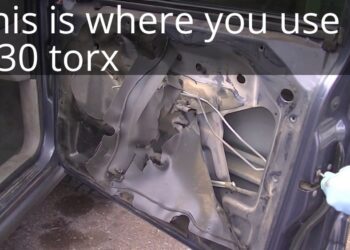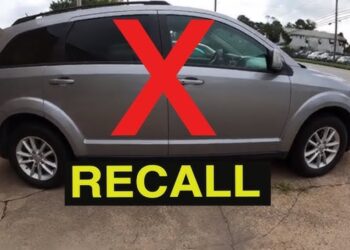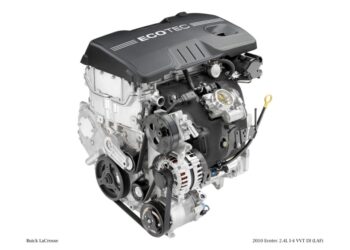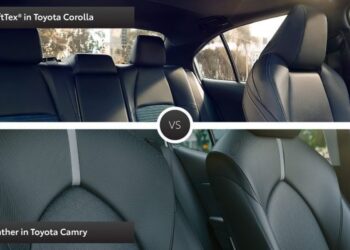Seeing the brake light on your dashboard go on and off can be confusing. It might signal a serious issue or something minor.
Understanding why this happens is crucial for every driver. The brake light serves as an essential warning system for your vehicle. It alerts you to potential problems with your brakes. Ignoring it can lead to unsafe driving conditions. In this blog, we’ll explore common reasons why the brake light flickers.
We will also discuss what steps you can take to address the issue. Stay tuned to ensure your vehicle remains in top shape and your rides stay safe.

Credit: www.youtube.com
Common Causes
Seeing the brake light on your dashboard can be alarming. This warning light is crucial as it signals potential issues with your braking system. Understanding the common causes can help you address the problem quickly. Below, we explore two major reasons why the brake light might turn on and off.
Low Brake Fluid
Low brake fluid is a frequent cause for the brake light to come on. Brake fluid is essential for the proper functioning of your brakes. It helps transfer the force from your brake pedal to the brake pads. Over time, your brake fluid can get low due to leaks or natural wear and tear. When the fluid level drops, sensors in the brake system detect it and trigger the warning light on your dashboard.
Check your brake fluid level regularly. Top it up if it’s low. If the level keeps dropping, inspect for leaks. Repair any leaks promptly to avoid further issues.
Faulty Brake Pads
Faulty brake pads can also cause the brake light to come on. Brake pads wear down over time. When they become too thin, sensors in the brake system activate the warning light. Worn-out brake pads can compromise your braking efficiency. This increases the risk of accidents.
Regularly inspect your brake pads. Replace them when they show signs of wear. This not only keeps the warning light off but also ensures your safety on the road.
Diagnosing The Issue
Seeing the brake light on your dashboard go on and off can be worrying. It is important to diagnose the issue to ensure your safety. Here are the steps you can take:
Check Brake Fluid Level
One of the first things to check is the brake fluid level. Low brake fluid can trigger the brake light on your dashboard. Follow these steps to check the brake fluid level:
- Open the hood of your car.
- Locate the brake fluid reservoir. It is usually near the back of the engine bay.
- Check the fluid level against the markings on the side of the reservoir.
- If the fluid is below the ‘MIN’ mark, add brake fluid up to the ‘MAX’ mark.
Always use the correct type of brake fluid for your vehicle. Refer to your car’s manual if unsure.
Inspect Brake Pads
Worn-out brake pads can also cause the brake light to turn on and off. Here is how to inspect the brake pads:
- Remove the wheel to access the brake pads.
- Look at the thickness of the brake pads.
- If the pads are less than 1/4 inch thick, they need replacing.
Replacing brake pads is crucial for proper braking performance. Always consult a mechanic if unsure about the condition of your brake pads.
Importance Of Timely Repair
Brake lights on the dashboard turning on and off can be a major concern. Addressing this issue promptly is vital. Ignoring it can lead to serious problems. Timely repair ensures your vehicle’s safety and longevity.
Safety Concerns
A malfunctioning brake light can be a sign of brake system issues. This puts you and others at risk. Brake failure can lead to accidents. Properly functioning brakes are crucial for safe driving. Address the issue as soon as you notice it.
Preventing Further Damage
Ignoring a brake light warning can lead to more significant problems. Small issues can escalate if left unchecked. Timely repairs can prevent costly fixes in the future. It ensures your vehicle’s overall health. Regular maintenance saves money and extends your car’s life.
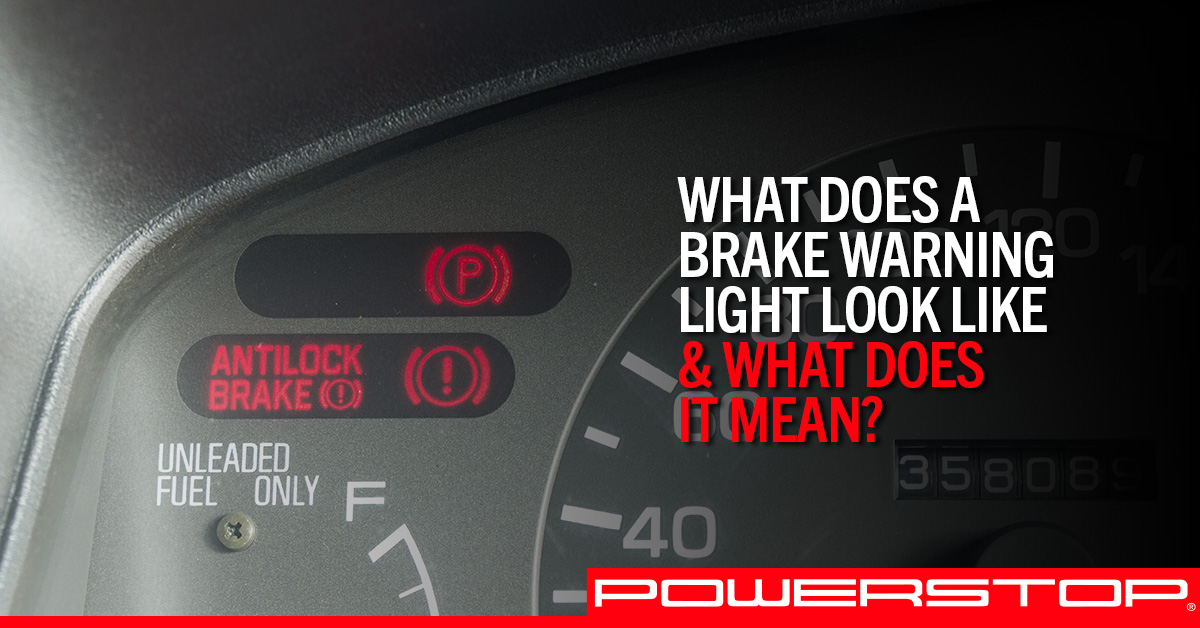
Credit: www.powerstop.com
Diy Troubleshooting Tips
Seeing the brake light on your dashboard go on and off can be worrying. But with some DIY troubleshooting tips, you can often identify the issue. This can save time and money. Let’s dive into the steps you can take to address this problem at home.
Basic Tools Needed
To start, gather a few basic tools. You’ll need a flashlight. A set of screwdrivers. A pair of gloves. And a tire pressure gauge. These tools will help you inspect different parts of your vehicle.
Step-by-step Guide
First, check the brake fluid level. Open the hood. Locate the brake fluid reservoir. If the fluid is low, add more. Low brake fluid can cause the light to go on and off.
Second, inspect the brake pads. Worn pads can trigger the brake light. Use a flashlight to check their thickness. Replace them if they are thin.
Third, examine the brake light switch. This switch is near the brake pedal. Ensure it is not stuck. Adjust or replace it if necessary.
Fourth, check the ABS system. If your car has ABS, a malfunction can trigger the light. Look for any error codes with a code reader.
Lastly, inspect the tire pressure. Uneven tire pressure can affect the brake system. Use a tire pressure gauge to check each tire. Adjust the pressure if needed.
By following these steps, you can often resolve the issue. If the light stays on, seek professional help.
When To Seek Professional Help
A brake light that flickers on and off can signal a serious issue. Seek professional help to ensure safety. Ignoring it may lead to brake failure.
A brake light on your dashboard going on and off can be worrying. It’s important to know when you should call a professional. Ignoring the warning signs can lead to serious issues. Let’s explore the signs to watch for and how to find a reliable mechanic.Warning Signs
If your brake light keeps flashing, it could mean a few things. Low brake fluid is a common cause. You might also have worn brake pads. Both need quick attention. A spongy brake pedal is another red flag. This means your brakes aren’t working well. If you hear grinding noises, your brakes are in bad shape. You should seek help right away.Finding A Reliable Mechanic
Finding a good mechanic can be tricky. Ask friends or family for recommendations. Check online reviews to see what others say. Look for certifications like ASE (Automotive Service Excellence). This shows the mechanic is well-trained. Visit the shop to see if it’s clean and organized. A tidy shop usually means good work. Don’t be afraid to ask questions. A good mechanic will explain things clearly. They won’t rush you through the process. In summary, don’t ignore brake warning lights. Watch for signs and get help soon. Choose a reliable mechanic for peace of mind. “`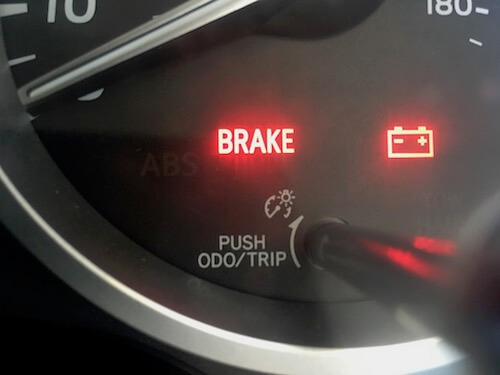
Credit: aplusjapaneseautorepair.com
Cost Of Repairs
Seeing the brake light on your dashboard can be stressful. This light indicates a potential issue with your braking system. Repair costs can vary greatly. Understanding these costs helps you budget for necessary repairs.
Average Repair Costs
On average, brake light repairs can range from $50 to $200. Simple fixes like replacing a bulb are on the lower end. More complex repairs involving sensors or wiring can be pricier.
Factors Affecting Prices
Several factors influence the cost of brake light repairs. The make and model of your car is a big factor. Luxury cars often have more expensive parts. The specific problem also affects the price. A faulty sensor costs more than a burnt-out bulb.
Labor costs vary by region. Areas with a higher cost of living often have higher repair costs. The expertise of the mechanic can also play a role. Experienced mechanics might charge more for their services.
Preventative Maintenance
Preventative maintenance is key to ensuring vehicle safety. Especially when dealing with brake systems. Regular checks can prevent major issues. This is crucial if your brake light on the dashboard goes on and off. Consistent care can extend the life of your brakes. Below are two essential aspects of brake maintenance.
Regular Brake Inspections
Regular brake inspections help identify wear and tear. Mechanics can spot problems early. This can save you from costly repairs. During an inspection, the brake pads are checked. They ensure the rotor and caliper are in good shape. Regular checks can also detect any leaks. This keeps your brake system in top condition.
Maintaining Brake Fluid Levels
Maintaining brake fluid levels is vital. Low fluid can cause the brake light to turn on. It affects brake performance. Check the brake fluid reservoir monthly. Use the right type of brake fluid for your car. Topping up fluid helps keep your brakes responsive. Always replace old or contaminated fluid. Clean fluid ensures efficient braking.
Common Misconceptions
It’s common to feel alarmed when the brake light on your dashboard turns on. Many drivers have misconceptions about what this warning means. These misunderstandings can lead to unnecessary stress and incorrect actions.
Myths About Brake Lights
There are several myths surrounding the brake light. Many believe that a flickering brake light always signals a major problem. This isn’t always true. Sometimes, it can indicate a minor issue. Another myth is that the brake light only relates to the brake pads. In reality, it can indicate other issues like low brake fluid.
Clarifying Common Myths
Understanding the real reasons behind the brake light can help. The light does not always mean an immediate danger. In some cases, it could be a sensor issue. Checking the brake system regularly can prevent unexpected problems. It’s important to read your car’s manual. This helps in understanding the specific indicators related to your vehicle.
Frequently Asked Questions
Why Does My Brake Light On The Dashboard Go On And Off?
Your brake light might go on and off due to a low brake fluid level. Check your brake fluid.
Is It Safe To Drive With The Brake Light On?
No, it is not safe. A brake light means a possible issue with your brake system. Get it checked.
What Should I Do If My Brake Light Is Flickering?
If your brake light is flickering, check the brake fluid and the brake pads. Visit a mechanic soon.
Can A Faulty Sensor Cause The Brake Light To Go On And Off?
Yes, a faulty sensor can cause the brake light to turn on and off. A mechanic can diagnose this.
How Often Should I Check My Brake Fluid?
Check your brake fluid every month. This helps ensure your brake system works well and is safe.
Conclusion
Keep an eye on your brake light. It can signal important issues. Simple fixes might solve the problem. But don’t ignore recurring warnings. Visit a mechanic if unsure. Regular checks can prevent bigger problems. Safety on the road is crucial.
A working brake system ensures this. Stay alert, stay safe. Maintain your vehicle well. Your peace of mind depends on it.


